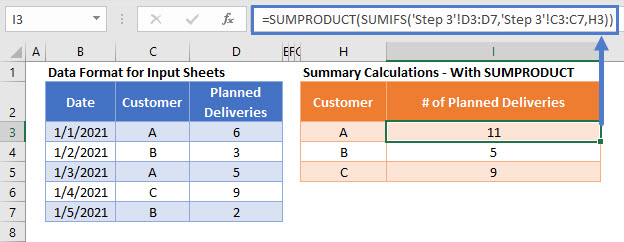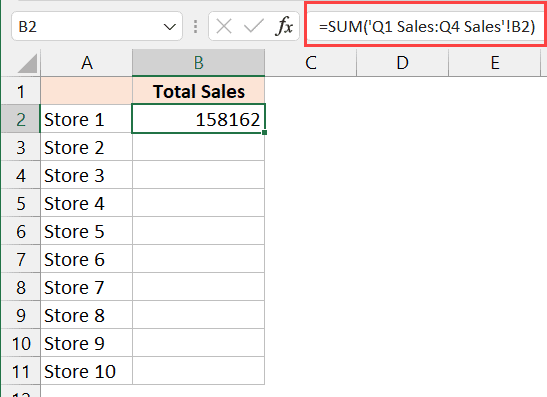Effortlessly Sum Excel Data on New Sheets Automatically

In the world of data analysis and management, Microsoft Excel remains a stalwart tool, widely used across various industries. One common task that many users face is the need to summarize or aggregate data from various sheets into a new, summary sheet. Automating this process can save significant time and reduce errors. This comprehensive guide will walk you through setting up Excel to automatically sum data from different sheets into a new summary sheet, enhancing your productivity and efficiency.
Understanding Excel’s Capabilities

Before diving into the tutorial, it’s vital to understand what Excel can do:
- Data Consolidation: Excel can pull data from different worksheets, effectively consolidating information.
- 3D References: This feature allows you to reference data across multiple sheets with a single formula.
- Macros and VBA: For more complex automation, VBA can be used to create custom scripts to meet specific needs.
Setting Up Your Workbook

To start with, ensure your Excel workbook is structured appropriately:
- Sheet Naming: Name your sheets logically, often based on months, departments, or projects for ease of reference.
- Data Uniformity: Ensure the layout and format of your data in each sheet are consistent for easier summing.
📝 Note: Consistent formatting and naming are crucial for the automation scripts to work seamlessly.
Using 3D References to Sum Data

3D references in Excel allow you to sum data from the same range across multiple sheets:
- Click on the cell where you want your total to appear on the summary sheet.
- Enter the SUM function followed by an opening parenthesis.
- Use the 3D reference syntax:
=SUM(Sheet1:Sheet12!A1)if you want to sum the cell A1 across sheets from Sheet1 to Sheet12.
🛑 Note: When using 3D references, ensure that all sheets within the range contain the specified cell or range for the formula to work correctly.
Implementing VBA for More Complex Summaries

For scenarios where simple 3D references are not enough, VBA (Visual Basic for Applications) can be used. Here’s how to get started:
- Press
ALT + F11to open the VBA editor. - Insert a new module by right-clicking on any existing item in the Project Explorer, choosing “Insert” > “Module.”
- In the new module, type your VBA code to perform the summation.
Here’s a simple VBA macro to sum specific data across multiple sheets:
Sub SumData()
Dim ws As Worksheet
Dim lastRow As Long, total As Double
Set ws = Sheets.Add(After:=Sheets(Sheets.Count))
ws.Name = "Summary"
For Each sheet In ThisWorkbook.Sheets
If sheet.Name <> "Summary" Then
lastRow = sheet.Cells(sheet.Rows.Count, "A").End(xlUp).Row
total = total + Application.WorksheetFunction.Sum(sheet.Range("A1:A" & lastRow))
End If
Next sheet
ws.Cells(1, 1).Value = "Total"
ws.Cells(1, 2).Value = total
End Sub⚙️ Note: This VBA script will create a new 'Summary' sheet and sum the total of column A from all sheets except itself.
Creating Dynamic Named Ranges

Using dynamic named ranges can make your summary sheets more robust by automatically adjusting the range as your data changes:
- Go to the Formulas tab and select Name Manager.
- Create a new name using the New button.
- In the Refers to: field, enter a formula like
=OFFSET(Sheet1!A1,0,0,COUNTA(Sheet1!A:A),1)to name a dynamic range that expands with your data.
You can then use this named range in your formulas or VBA scripts for more flexible data handling.
Regular Updates and Error Handling

Automation in Excel can break if not updated regularly or if there are errors in data entry:
- Regular Updates: Ensure your formulas and VBA scripts are updated to match any changes in your workbook structure.
- Error Handling: Include error handling in VBA to manage exceptions or missing data gracefully.
By integrating these techniques, you'll not only streamline the process of summing data across multiple sheets but also ensure your workbook remains functional as data evolves. Whether you're dealing with financial records, project tracking, or any data-intensive task, automating summary sheets in Excel can revolutionize your workflow.
What happens if my sheets are not uniformly formatted?

+
If sheets lack uniformity, use VBA or complex Excel formulas to handle different data structures or ensure your sheets are consistently formatted before automation.
Can I sum data from sheets within different workbooks?

+
Yes, but this involves VBA with Workbook objects and may require these workbooks to be open or linked for data retrieval.
How can I automatically update my summary sheet when data changes?

+
You can use VBA to trigger on certain events like sheet changes or workbook open/close. Alternatively, dynamic named ranges can make your formulas more adaptable to changes in data.
To wrap things up, mastering automation in Excel for summing data across multiple sheets can significantly boost your productivity. Through 3D references, VBA scripts, and dynamic named ranges, you can design a workbook that not only aggregates data efficiently but also adapts to your changing data needs. Remember to keep your workbook structure consistent, update your automation techniques regularly, and include error handling to manage potential issues smoothly. With these tools and strategies, you’ll be well-equipped to handle any data aggregation task Excel throws at you, making your work life more efficient and less prone to human error.



